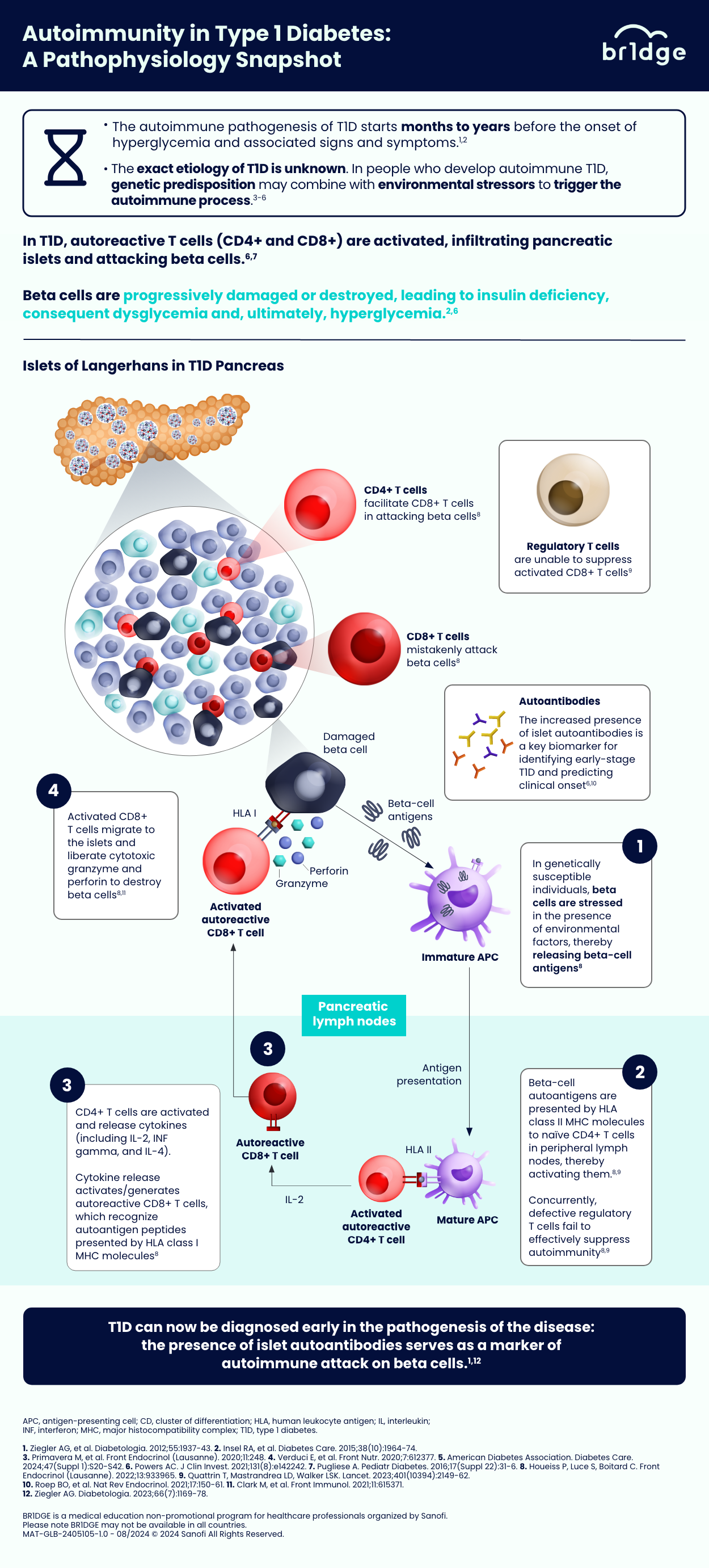- Resource
- BR1DGE
- Pathophysiology
- Infographic
Autoimmunity in Type 1 Diabetes: A Pathophysiology Snapshot
T1D is an autoimmune disease whereby autoreactive T-cells drive progressive beta-cell damage and destruction, ultimately leading to insulin deficiency, dysglycemia, and hyperglycemia.
Learning Objectives
- Educate on the pathophysiology of autoimmune T1D
- Highlight the autoimmune nature of beta-cell destruction in T1D
- Highlight the key players that contribute to the development of T1D, and the role of autoantibodies as markers of autoimmunity in T1D
Summary
The autoimmune pathogenesis of T1D starts months to years before the onset of hyperglycemia and associated signs and symptoms.
The exact etiology of autoimmune T1D is unknown. A combination of genetic predisposition and environmental stressors may trigger the autoimmune process. In T1D, autoreactive T cells (CD4+ and CD8+) are activated, infiltrate pancreatic islets, and attack beta cells. Beta cells are progressively damaged or destroyed, leading to insulin deficiency, dysglycemia, and hyperglycemia. The presence of islet autoantibodies serves as a marker of autoimmune attack on beta-cells.
MAT-GLB-2405105-1.0 08/2024




